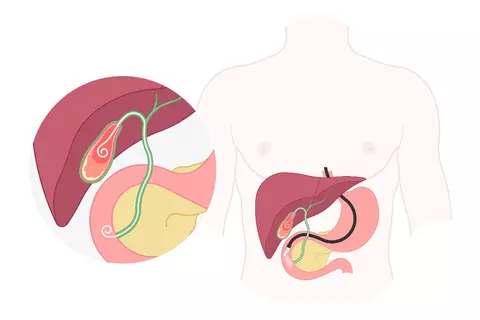Endoscopic transpapillary gallbladder drainage reduces the risk of cholecystitis recurrence
Ridtitid W, Karuehardsuwan J, Faknak N, Piyachaturawat P, Vongwattanakit P, Kulpatcharapong S, Angsuwatcharakon P, Mekaroonkamol P, Kongkam P, Rerknimitr R.
Prompt cholecystectomy is indicated for symptomatic bile duct stones or cholecystitis. In some cases, this is difficult to achieve in everyday life in the short term. This study from Thailand, which was performed during the COVID-19 pandemic when surgeries had to be postponed, shows that endoscopic transpapillary drainage can effectively prevent recurrent cholecystitis. It should be noted that there was no control group that underwent immediate surgery, so the results do not impact the standard of care.
Background and aims: Endoscopic transpapillary gallbladder stenting (ETGS) has been proposed as one of the adjunctive treatments, apart from antibiotics, before surgery in patients with acute cholecystitis whose cholecystectomy could not be performed or was deferred. Currently, there are no comparative data on the outcomes of ETGS in those who receive and do not receive ETGS. The authors aimed to compare the rates of recurrent cholecystitis at 3 and 6 months in these 2 groups.

Methods: Between 2020 and 2023, eligible acute calculous cholecystitis patients with a high probability of common bile duct stone, who were surgical candidates but could not have an early cholecystectomy during COVID-19 surgical lockdown, were randomized into groups A (received ETGS) and B (did not receive ETGS). A definitive cholecystectomy was performed at 3 months or later in both groups.
Results: A total of 120 eligible patients were randomized into group A (n = 60) and group B (n = 60). In group A, technical and clinical success rates were 90% (54/60) and 100% (54/54), respectively. Based on intention-to-treat analysis, group A had a significantly lower rate of recurrence than group B at 3 months (0% [0/60] vs. 18.3% [11/60]; p = 0.001). At 3–6 months, group A showed a non-significantly lower rate of recurrent cholecystitis compared to group B (0% [0/32] vs. 10% [3/30]; p = 0.11).
Conclusions: Endoscopic transpapillary gallbladder stenting (ETGS) could prevent recurrent cholecystitis in acute cholecystitis patients with common bile duct stone whose cholecystectomy was deferred for 3 months. In those who did not receive ETGS, the majority of recurrences occurred within 3 months.